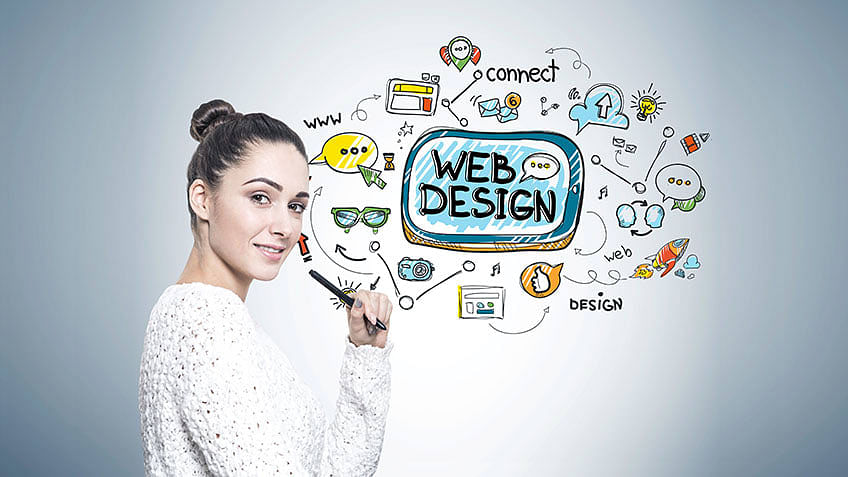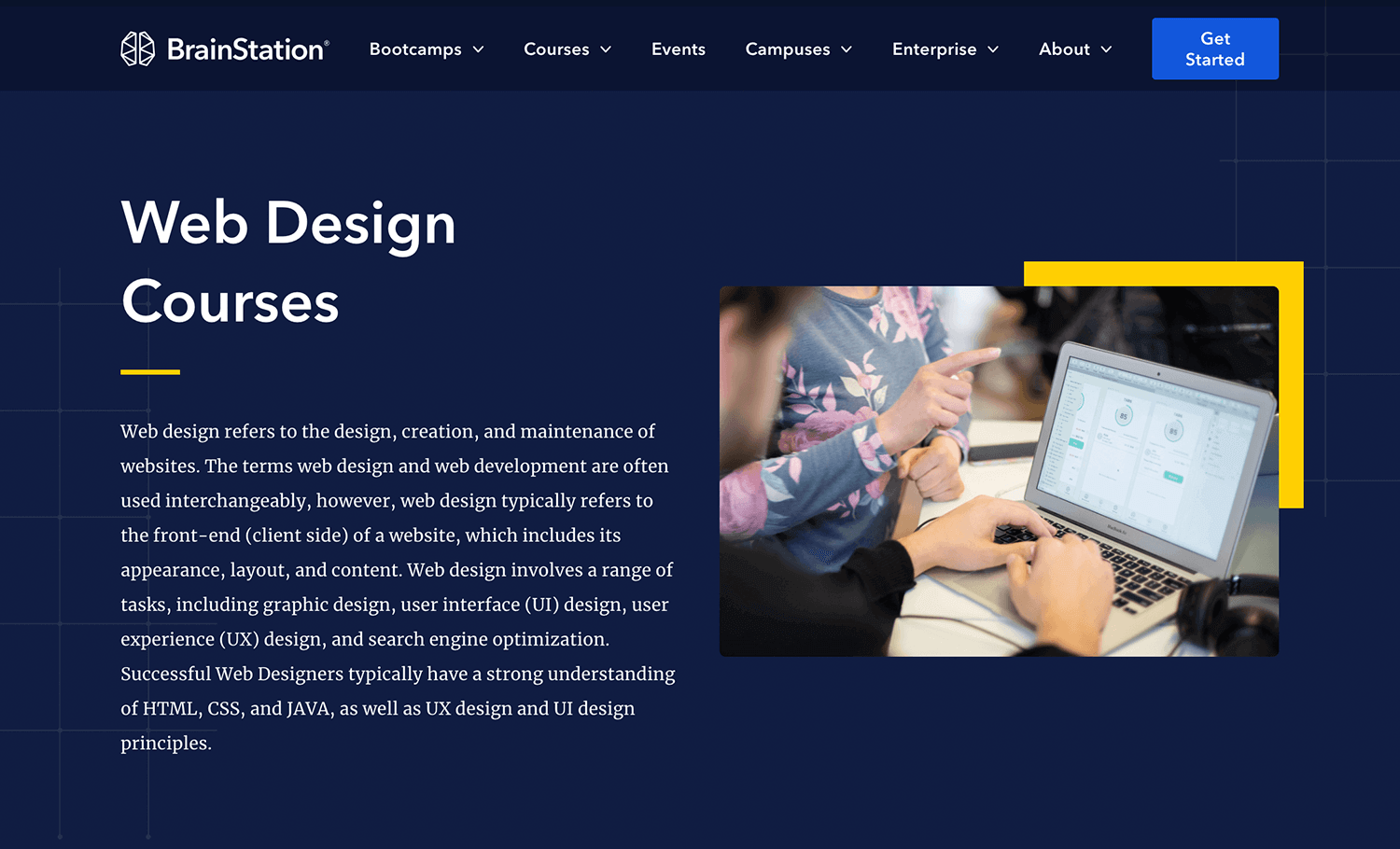Aligned Position Web Design: Expert Web Design Strategies for Achieving Business Goals Online
Aligned Position Web Design: Expert Web Design Strategies for Achieving Business Goals Online
Blog Article
The Ideal Sorts Of Website Design to Enhance Customer Experience and Involvement
In the ever-evolving landscape of digital communication, the effectiveness of Web style substantially affects user experience and interaction. Numerous layout approaches, such as minimalist, responsive, and interactive layouts, each offer unique benefits that can cater to diverse customer needs.
Minimal Website Design
As digital landscapes come to be significantly cluttered, minimalist Web design has actually emerged as an effective technique to improving individual experience. This style philosophy focuses on simpleness, concentrating on vital components while eliminating unneeded interruptions. By utilizing enough white space, uncomplicated navigating, and a minimal shade palette, minimal style promotes quality and directs user focus to key content.
The core concept of minimal Web layout is to produce a seamless interaction for customers. By lowering cognitive lots, users can quickly realize info without feeling overwhelmed. This straight method not only enhances functionality but likewise encourages interaction, as site visitors are most likely to discover a site that is aesthetically attractive and very easy to browse.
Additionally, minimalist style usually emphasizes typography and imagery, using these aspects purposefully to convey messages successfully. This focus on crucial elements can boost brand name identity and produce a memorable customer experience. In significance, minimalist website design is not just a fad; it is a thoughtful approach that acknowledges the importance of user-centered design. By removing away extraneous aspects, developers can produce a much more engaging, effective, and pleasurable Web experience for all customers.
Receptive Website Design
In today's diverse digital setting, receptive Web design has actually become essential for producing a seamless customer experience across a plethora of gadgets. As users access internet sites on smart devices, desktop computers, laptop computers, and tablet computers, the capability of a site to adapt its layout and material to different display sizes and resolutions is essential.
Responsive website design uses adaptable grids, pictures, and CSS media questions to guarantee that Web content exists ideally, despite the gadget used. This approach not just boosts the aesthetic allure of an internet site however additionally significantly improves usability. Customers are more probable to engage with a website that offers a consistent experience, as it removes the irritation of needing to focus or scroll excessively.
By embracing responsive style, businesses can enhance their visibility and reach a broader target market. In summary, responsive Web design is an essential technique that improves individual experience, engagement, and general satisfaction.
Interactive Website Design
Responsive website design lays the groundwork for improving customer experience, but interactive Web style takes this an action even more by involving customers in a more dynamic method - Aligned Position Web Design. By incorporating elements such as computer animations, clickable models, and real-time comments, interactive website design captivates users, drawing them right into a richer surfing experience
This strategy not only cultivates engagement but likewise motivates customers to explore material proactively instead of passively consuming it. Strategies such as gamification, where customers earn rewards for finishing jobs, can significantly improve the time invested in a site and enhance general satisfaction. In addition, interactive attributes can streamline intricate details, making it extra absorbable and enjoyable.

Incorporating interactive style components can also bring about higher conversion rates, as individuals are more probable to involve with a site that actively entails them. Aligned Position Web Design. Ultimately, interactive website design changes user experiences into remarkable trips, making sure that site visitors return time and again
Flat Design
Defined by its minimalistic technique, level layout stresses simplicity and functionality, stripping away unnecessary elements and focusing on necessary features. This design viewpoint prioritizes usability, guaranteeing that individuals can browse user interfaces easily and efficiency. By employing a tidy visual, level style gets rid of the mess commonly located in a lot more elaborate styles, therefore improving user concentrate on content and capability.
The characteristic of level style hinges on its use strong colors, simple typography, and geometric click over here forms. These components add to an aesthetically appealing user interface that is both approachable and modern. Additionally, level top article style fosters a feeling of clearness, enabling users to recognize crucial activities and details without disturbance.
Moreover, flat design is specifically efficient in responsive Web style, as its simplicity converts well across numerous gadgets and screen sizes. The absence of detailed structures and gradients lessens loading times, which is crucial for keeping customer interaction. As digital landscapes proceed to evolve, level design continues to be a pertinent option for creating easy to use websites that boost overall experience. By concentrating on essential attributes, flat style not only satisfies customer requirements but additionally encourages smooth interaction, making it a crucial component of efficient Web style techniques.
Adaptive Web Style
Adaptive Web design personalizes the customer experience by developing multiple repaired designs tailored to different screen sizes and gadgets. Unlike responsive design, which fluidly readjusts a single design, flexible layout uses distinctive formats for specific breakpoints, making sure optimum discussion on numerous systems. This strategy permits developers to focus on the one-of-a-kind features of each gadget, boosting usability by providing precisely what users require based upon their context.
Among the key benefits of flexible Web design is its ability to optimize load times and performance. By offering customized material and pictures that fit the user's device, web sites can reduce data usage and boost loading rates. This is especially helpful for customers with slower links or restricted data plans.

Furthermore, adaptive style promotes a more constant and regulated branding experience. Because developers create several formats, they can guarantee that the aesthetic components align with the brand's identification throughout various platforms - Aligned her response Position Web Design. This leads to a natural user experience, enhancing interaction and promoting customer retention
Final Thought
Minimal layout cultivates quality and emphasis, while receptive style guarantees versatility across various tools, advertising access. Jointly, these style comes close to add to the development of easy to use environments that not only improve contentment however likewise drive higher conversion prices, highlighting their vital value in contemporary Web layout techniques.

Minimalist style cultivates clearness and focus, while responsive style makes certain adaptability across various gadgets, promoting availability. Jointly, these style comes close to add to the development of easy to use settings that not just boost contentment yet also drive higher conversion rates, underscoring their crucial significance in contemporary Web layout strategies.
Report this page